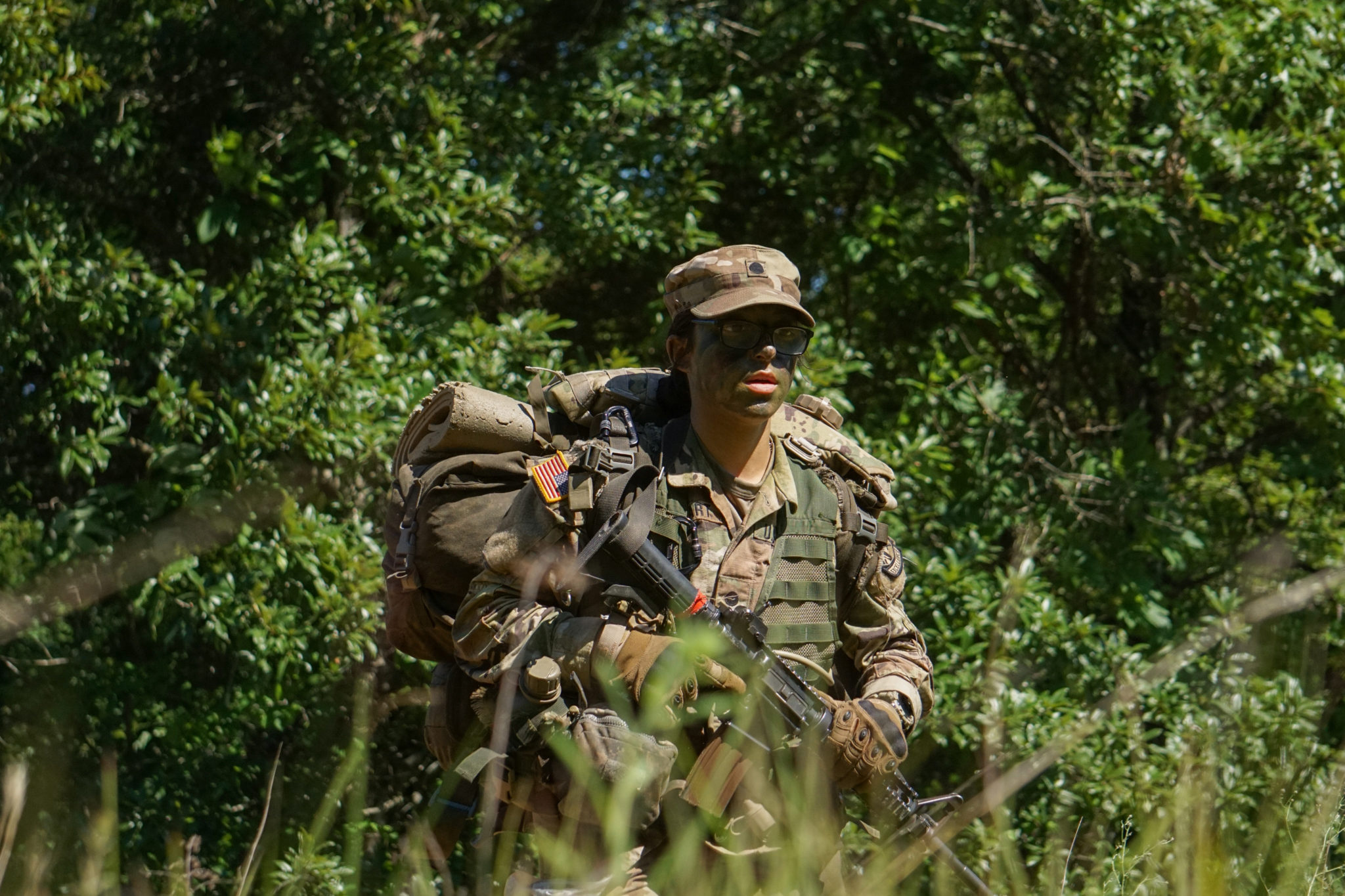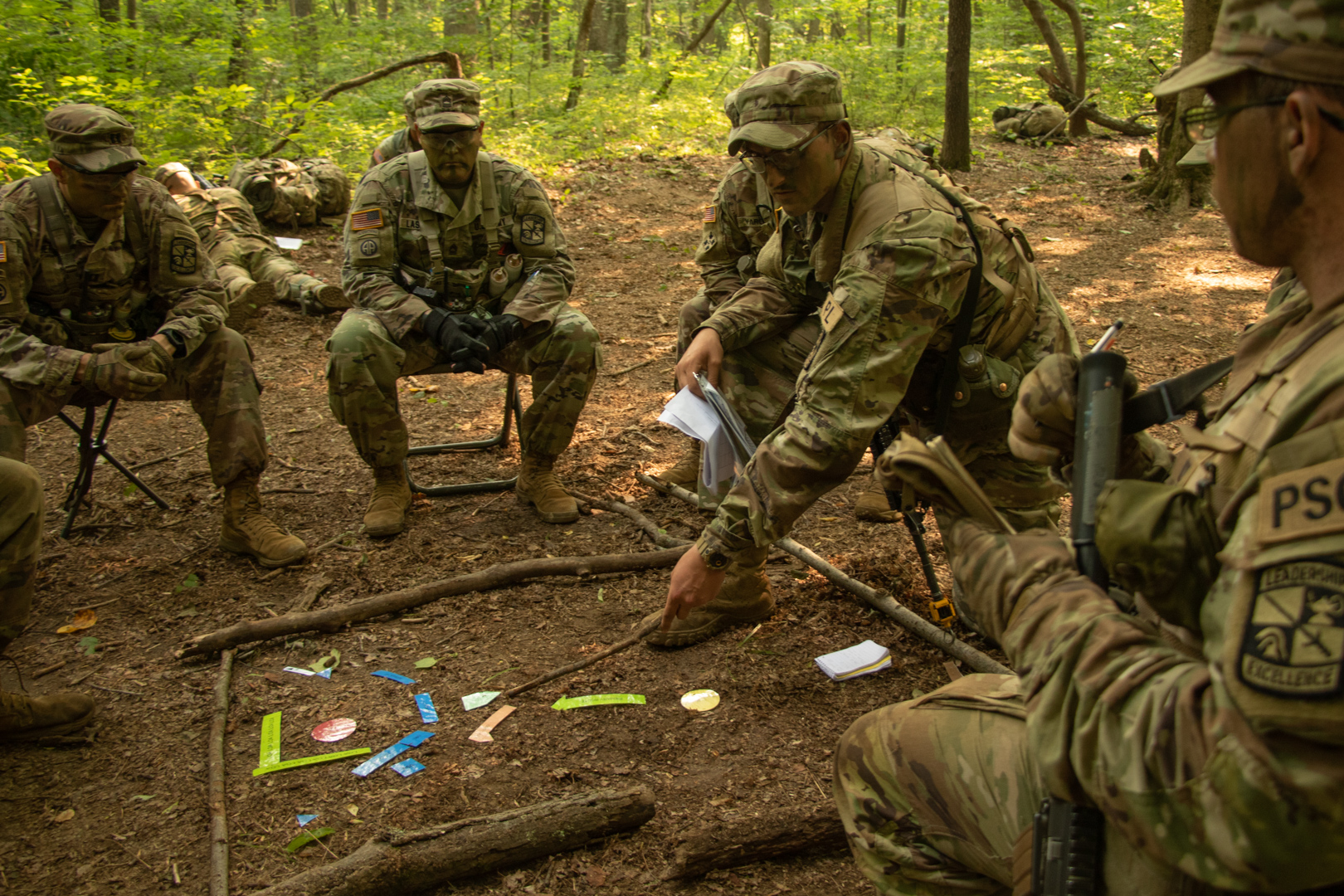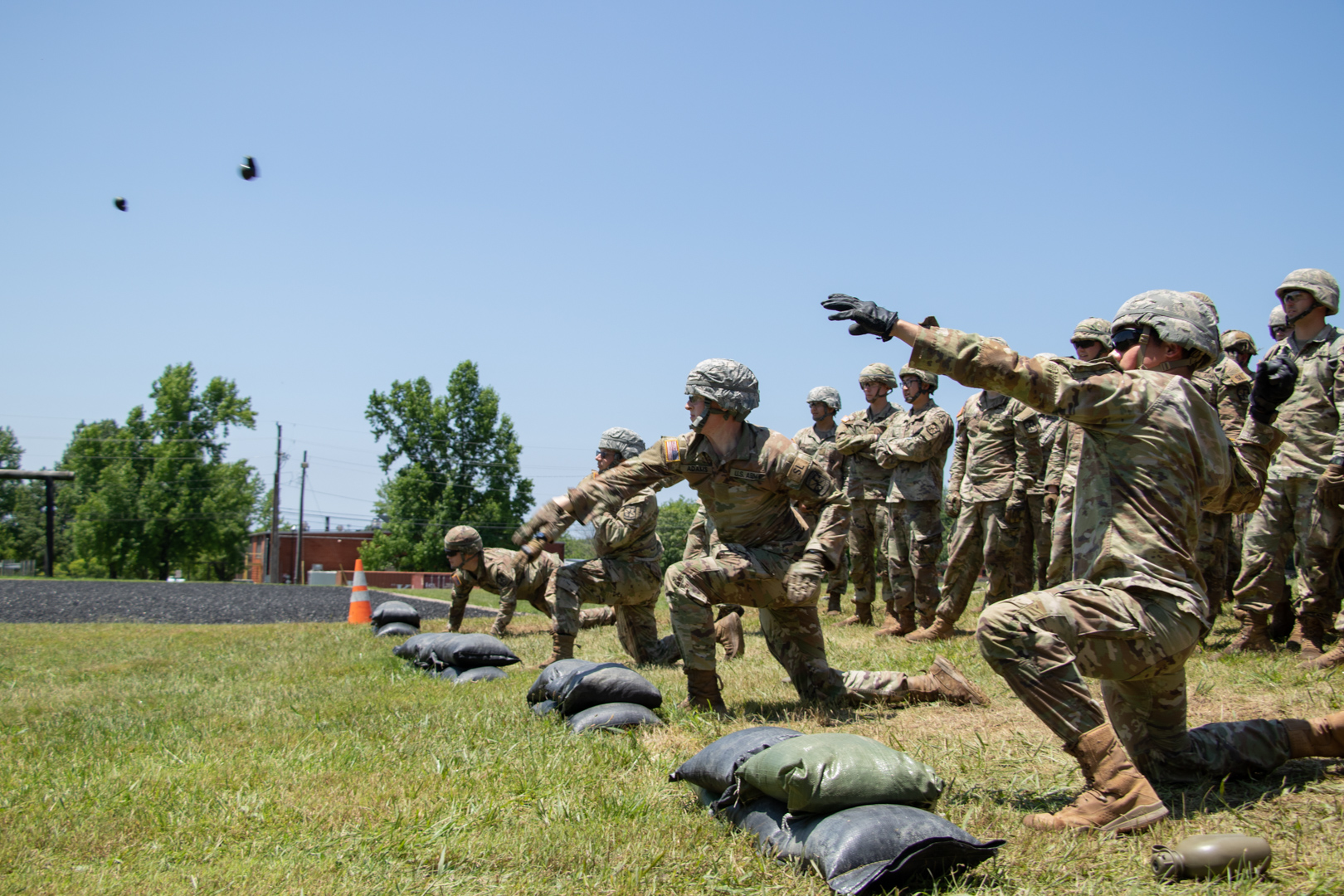FORT KNOX, Ky.—Cadre promised Cadets an unusual day of training early morning July 5. Cadets would be spending the day dressing up and applying an unusually intoxicating fragrance – CS gas.
These Cadets started their day learning about the gear and attitude required to conquer the CS gas chamber. The Cadets are taught about JSLIST (Joint Service Lightweight Integrated Suit Technology), vehicles and testing equipment.
The Gear
Cadets put the gear on top of their uniforms, but the overgarment can be worn as a primary uniform also. The lightweight suit has two primary pieces – the pants and a front open zip/button long sleeve shirt.
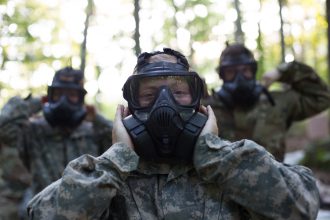
4th Regiment, Basic Camp, Cadet succesfully seals her mask during her test at the CBRN trainging in Fort Knox, Ky. June 5, 2018. Photo by Dustin Massengill.
For the Cadets the mask is vital to their training. The masks are large and black with two white breathing holes near the cheeks of the face. These holes are where the filters are attached. When properly placed into the sockets and locked the mask filters remove harmful and aggressive agents from the ambient air.
This suit is an efforts of four branches of the military wanting to find a common protective uniform. It is shared by the Army, Air Force, Marines and Navy.
The last two parts of the suit are large rubber boots and gloves that are used depending on the severity of the agents. This is decided by the MOPP (Mission Oriented Protective Posture) level. This consists of 5 levels, zero-four. Zero means all gear is carried and nothing worn and four being everything is worn.
The wearable gear isn’t the only thing covered at training. The Cadets also see and explore a M1135 which is a Nuclear, Biological and Chemical Reconnaissance Vehicle. This large armored vehicle is used to help soldiers understand their environment and identify harmful chemicals. Chemical agent detectors were also available for viewing which are used to identify harmful agents in air, liquid or sold substances.
This gear plays an important role in keeping Soldiers alive and capable of completing their missions. The gear either keeps them alive or makes it easier for them to maneuver when threating substances come into play. That’s why this training lane is so vital for the Cadets.
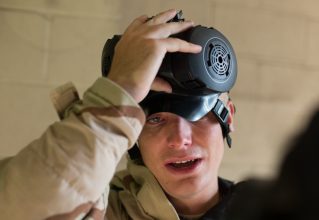
4th Regiment, Basic Camp, Cadet attempts to sing the ABC during his first exposure to CS gas at Fort Knox, Ky. June 5, 2018. Photo by Dustin Massengill.
Cadets leave the site understanding how the biohazard equipment works and why they need to use it. Such as sealing their mask to prevent irritants in the air from gaining access to their lungs or eyes.
“For $893 you expect a pretty good mask,” said Cadet Taylor Ayrs, University of Tennessee, “but it defiantly works really, really well and if you go through the procedures they teach you, then you will be able to clear [the mask] and [the mask] will work just fine.”
The Fear
After spending 80-minutes learning to put on their gear the Cadets had to test out to and move on to the CS chamber. They are required to be able to put on their mask and properly seal it in nine seconds. Following the first test the Cadets must put on their entire JSLIST uniform in eight minutes to receive a go. They only have two attempts to pass each test.
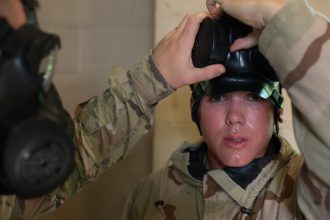
4th Regiment, Basic Camp, Cadet experses his first breath of CS gas at Fort Knox, Ky. June 5, 2018. Photo by Dustin Massengill.
After passing both tests they are prepared to take on the confidence chamber. Their time in the chamber consist of two parts. Developing confidence in their gear is the key goal while the second half is about familiarizing themselves with the effects of CS gas.
The confidence chamber is a small, cramped room with two entrances. The dark space has an odor of black pepper and bleach. A large metal barrel in the center of the room works as a makeshift table, topped by a small burner used to disperse CS gas.
The gas disseminating from the dark, alter like container immediately begins irritating any exposed flesh. The discomfort is aggressive, but minor, feeling as if cayenne pepper was vigorously rubbed into the skin.
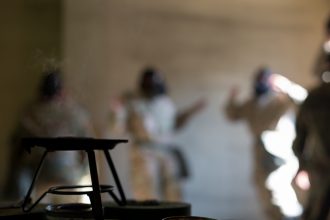
4th Regiment, Basic Camp, Cadets participate in CBRN trainging at Fort Knox, Ky. 5, 2018. Photo by Dustin Massengill.
The Cadets circle around the barrel, backs facing the wall. They start with jumping jacks military style, in cadence. After raising their heart rate Cadets continue the confidence check by rotating their necks, showing them how effective the mask is during motion.
The Cadets move on to the last half of their exercise. Individually they raised their masks exposing their eyes, nose and lungs to the wrath of the gas. The Cadets scream, or attempt, their name and hometown followed by an excerpt from their favorite song, many opting for the ‘ABCs’ or ‘The Army Song’.
The trainers, listening to each Cadet’s ballad, silently count, and once a Cadet has been exposed long enough the Cadet is instructed to put their mask back on. This is an important moment in the training. In the seconds after the Cadets put their masks back on they personally experience the value of their equipment in a vital way, quickly developing confidence in their gear. Coining the name, confidence chamber. This is the moment, above all others, a Cadet will value their equipment and trust in it.
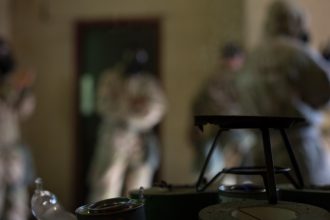
CS gas sits on top of a burner in the middle of the room during the CBRN training at Fort Knox, Ky. July 5, 2018. Photo by Dustin Massengill.
MS3 trainers, Cadets who have previously participated in Basic Camp, act as mentors to the current basic camp Cadets. Cadet Leonel Flores, Oregon State University, was one of these trainers and wanted to remain strong for those around him.
“I was trying to calm them down about [the gas],” he said, “a lot of them were really scared about [the gas]. It’ll be over in about 10 minutes so there is nothing to worry about there, it’ll pass.”
After a small break from the gas, safe behind the mask, the Cadets prepare for the most grueling challenge of the morning. The cadets line up, arm on shoulder and are instructed to not let go of one another till they safely leave the room.
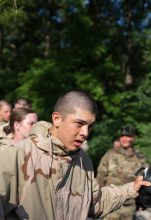
4th Regiment, Basic Camp, Cadet fans his arms after exiting the CS trainging at Fort Knox, Ky. 5, 2018. Photo by Dustin Massengill.
The Cadets in unison release their masks, raising them into the air and begin walking in a circle. Coughing and gagging noises echo in tight space. The tail of the line pushes into the front in an attempt to speed up the line, but a masked trainer ensures the Cadets stay moving in a steady, safe pace and leave the room respecting their gear.
Once released into the clean, fresh air, snot ropes dragging the ground, the Cadets begin singing and walking in a small circle near the chamber. The singing gives them both a distraction and allows them to clear their lungs.
“You can be as tough as you want, but it is going to get you,” Flores said. “You are fine for about 10-to-15 seconds and then it hits you in the chest and you start to secrete everything.”
The Cadets agreed that the best way to make it through the chamber is to focus on the end because it is short a short experience and the discomfort only last a few minutes after leaving the chamber.

